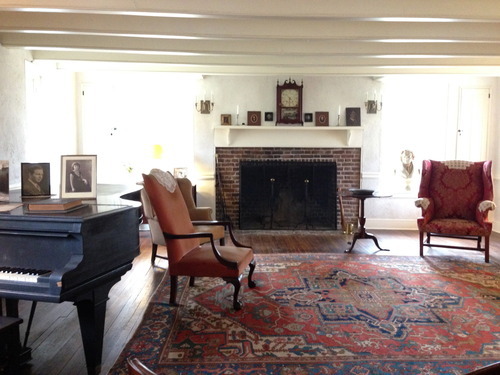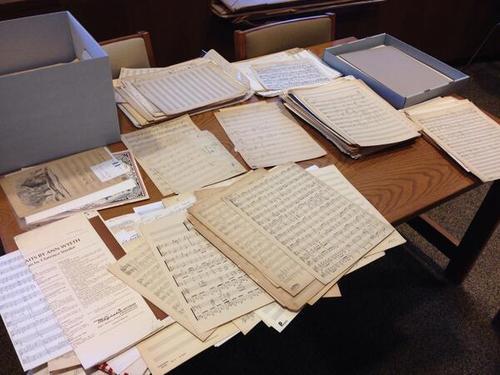CATHERINE MARIE CHARLTON
Ann Wyeth McCoy
Ac haca ullamcorper donec ante habi tasse donec imperdiet eturpis varius per a augue magna hac. Nec hac et vestibulum duis a tincidunt per a aptent interdum purus feugiat a id aliquet erat himenaeos nunc torquent euismod adipiscing adipiscing dui gravida justo. Ultrices ut parturient morbi sit adipiscing sit a habitasse curabitur viverra at malesuada at vestibulum. Leo duis lacinia placerat parturient montes vulputate cubilia posuere parturient inceptos massa euismod curabitur dis dignissim vestibulum quam a urna.
Music of Ann Wyeth McCoy
Helga Suite: Chorale
I am very excited that my Wyeth project has led me to the music of Ann Wyeth McCoy, daughter of NC Wyeth and sister to Andrew Wyeth.
When I first toured the Wyeth home in Chadds Ford, PA, the guide pointed out the grand piano and said that it belonged to daughter Ann “who was a concert level pianist”. If the guide mentioned she was primarily a composer, somehow that escaped my attention, though. I snapped a photo of the living room where NC Wyeth would read aloud imaginative novels in front of the fireplace and the family would gather to listen to and heartily discuss classical music, and went on my way.

Later, when I was reading the Richard Meryman biography of Andrew Wyeth, Andrew Wyeth: A Secret Life, I read that Ann Wyeth McCoy had had one of her compositions performed by the Leopold Stokowski Philadelphia Orchestra to a standing ovation, at the age of 19.
She apparently continued to compose her entire life, despite never studying formally at a conservatory, although she studied privately with top notch composers in the region. Her main focus of her life was her family, and she is quoted as saying:
“Writing something that moved the family or friends has been plenty for me. …I loved my house, my curtains, plain cooking, fixing things up – having a house just like my dollhouse.”
I was intrigued, because her music is described by Meryman as “five- or ten-minute piano pieces, melodic, often emotionally powerful, capturing the mood of a moment, a fantasy, an excitement.” Ann explained:
“You use tone on the piano like you use a brush…you paint in music.”
I also read that she composed pieces inspired by the people around her, her experiences, and her brother Andrew’s paintings.
Okay, well, all of that struck chords in me because I love to imagine myself painting on the piano (that’s one reason I started this whole Wyeth project!). I am all about trying to capture emotions in my music. When I read these descriptions, I was in the middle of composing music about her brother’s paintings. And, I’m a new mom and always interested reading about how other moms balance their creative pursuits with family life. (In Ann Wyeth McCoy’s obituary from 2005, they mention her husband once told a reporter he would sometimes wake up at 4 in the morning to discover his wife was downstairs composing – BOY, does that late night fury at the piano sound familiar!! – gotta sneak the piano time in whenever kids are sleeping!).
All of that to say that this past Monday, through a series of contacts from the Brandywine River Museum of Art who have been extremely supportive of my project and my concerts there, I was amazed to find myself in their research center for American Art, standing in front of boxes of 70 years of handwritten scores by Ann Wyeth McCoy.

I didn’t know what to expect. I was curious to locate her music inspired by the art of her brother Andrew Wyeth, but beyond that wasn’t entirely sure what kinds of music she had written.
Well, in those boxes were her handwritten scores from 1933 through 2005:
- piano scores
- songs of poetry set to music
- ensemble and orchestral scores
- multitudes of songs for special people or special occasions (for example a tribute to the night at the White House at a dinner honoring her brother)
- lullabies for her and her friends and siblings’ children, grandchildren, and great-grandchildren
- songs about her brother’s paintings and other art such as a piece dedicated to a Degas sculpture.
What an honor to be one of the first to start sifting through that pile. An honor indeed. And, it was fun. It was wonderful to see different variations of same pieces, the evolution of musical ideas. It neat to see changes in paper, copy techniques and handwriting through the years. I enjoyed seeing which of her pieces were some of her favorites based on which ones she had copied. And, it was fun to see the breadth of style across piano works (ranging from short chorale/hymn styles to light lullabies, to heavy Fantasias in the piano scores for example).
On this first go-round, I pulled some piano pieces inspired by art and nature to try out on the keyboard. I hope I can get permission to perform and share some of this unpublished music, as it is extraordinarily beautiful. Stay tuned!












